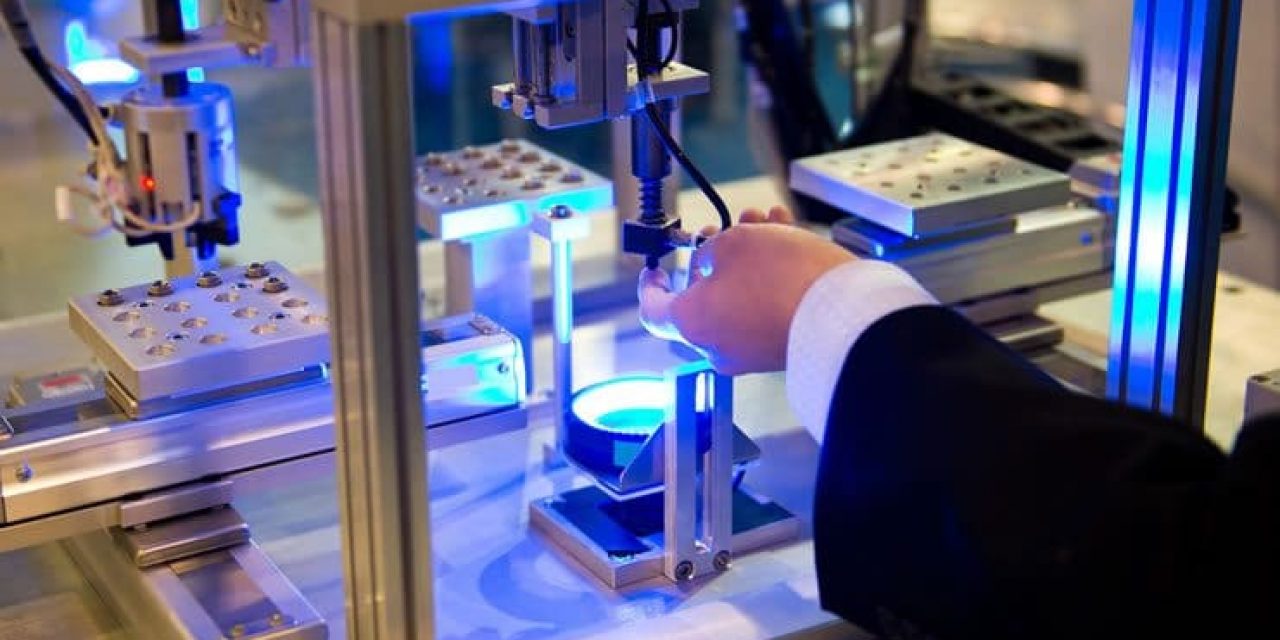We live in a world that’s full of transducers, very tiny ones, which you can’t see, embedded in MEMS (micro-electromechanical systems) and larger ones which, well, you can see. Your smartphone is full of transducers. And when your fridge makes a noise because the door has been open too long that’s all about transducers as well.
Transducers exist since decades and as technology evolved they got smaller and smarter and simply ubiquitous. In today’s digital and connected world of IoT (Internet of Things) there are even more transducers that impact your life and will increasingly do so without you probably knowing it.
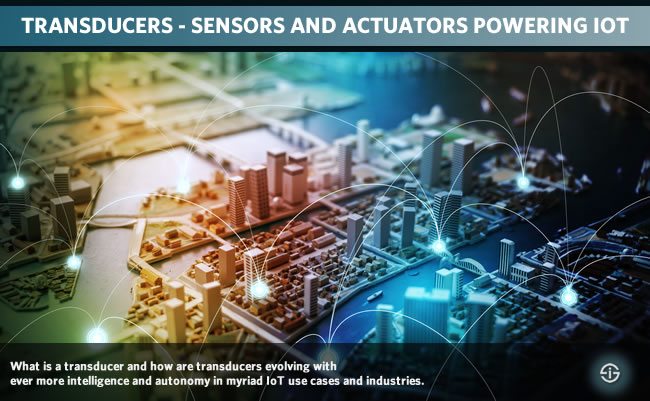
Transducers are evolving and being used in applications such as smart connected cars, digital twins, the smart home, building management, virtual reality, Industry 4.0, healthcare, well, everything really. Let’s take a look at transducers, what they are and how they are used with a focus on some specific applications and IoT use cases – and of course key evolutions.
What is a transducer and how are transducers related with IoT?
A transducer is simply a device that converts a form of energy into another. Take loudspeakers, they are nothing else than electroacoustic transducers, converting an electrical audio signal into sound.
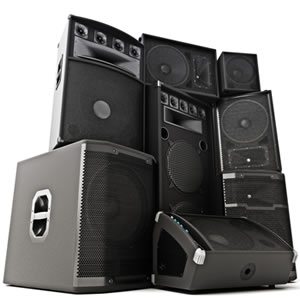
Or a sonographer for obstetric ultrasonography: an ultrasonic transducer. Or, to name one of many industrial applications: flow transducer equipment. And probably closer to your pocket the screen actuator on your smartphone, which essentially turns an electric signal into light. The list is endless.
There are two types of transducers we’ve mentioned several times before when talking about IoT or about evolutions in the MEMS and sensor market, namely those sensors themselves and actuators.
The latter two are probably more familiar terms than transducers and, in the scope of IoT and beyond, certainly the sensors.
Transducers: sensors, the source of IoT data
A sensor is not just a form of transducer, it is indeed also what enables IoT to even exist.
Without sensors we wouldn’t be able to capture any data from parameters and forms of energy in areas such as temperature, light, force, acceleration, presence of gases and whatnot.
Of course sensors aren’t new at all either. They have been ubiquitous since decades too. However, with all the connected devices or, in this scope, IoT devices, which are equipped with sensors, they sit at the edge and in the middle of the data nervous system that IoT really is.
Sensors and that other transducer, actuators, aren’t just in IoT devices (or your smartphone for that matter) in the microscopic formats of MEMS, those small embedded systems whereby MEMS stands for micro-electromechanical systems. The same goes for actuators, it all depends on what they are to be used for (and they are used for a lot). Take sensors for wearables, for example: those definitely have to be very very small as you can see below.
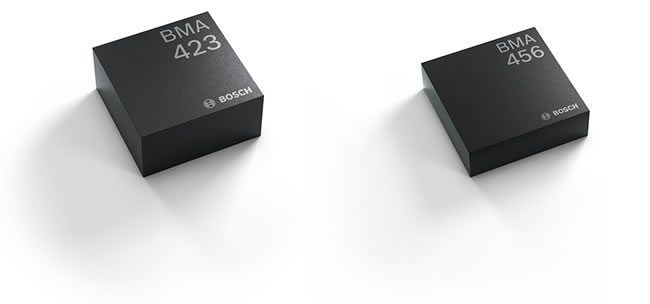
Transducers: actuators, when IoT takes action
An actuator is also a transducer. How is it different from a sensor? Well, sensors are used to ‘sense’ and capture data. They do so by transducing many possible variables and changes in these variables, such as temperature, acceleration, sound and another few hundreds of variables or, more precisely, signals which are produced by a form of energy such as motion or chemical energy into a digital form, which then can be leveraged in the form of data.
This simple input and output functioning of a sensor occurs in actuators as well. Yet, in a way it happens in the opposite direction.
Whereas sensors transduce a signal from variables in the physical environment, actuators get a signal to set something in motion. That signal can also be a manual force but in the context of IoT and certainly of all those tiny MEMS, we do mean ‘digital’ signals. What the actuator does or sets in motion can be anything really. Remember the fridge that makes a noise to alert you that temperature inside is rising too much because you left the door open too long? That is an action which is set in motion by an actuator as a result of a sensed change in variables as is, for instance used in HVAC and damper actuators (more examples below the image).
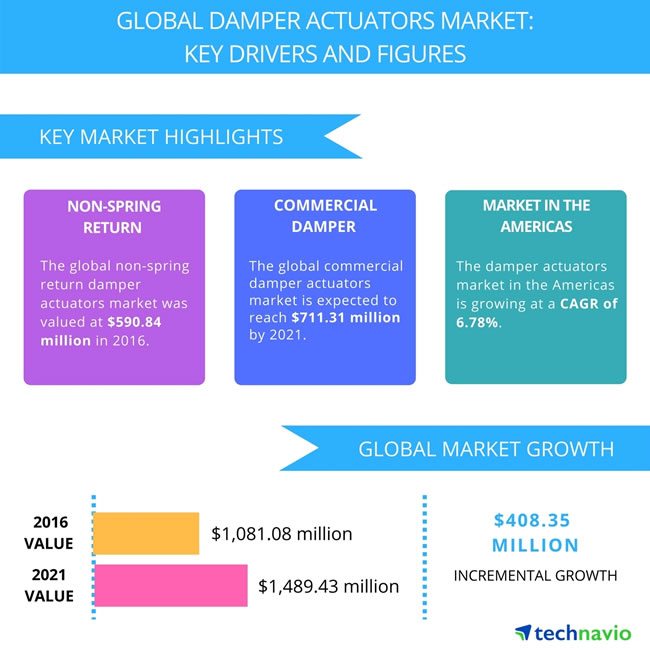
Assuming that you don’t have a car with too much of those technologies people have become used to, let alone the connected car or smart vehicle that is coming your way, a good example of very small actuators is what happens when you have a car accident: the airbag is activated.
Of course today’s cars are full of sensors and actuators in small embedded systems and there are plenty more to come. Actuators are used everywhere, among others in HVAC whereby you have different types of actuators such as damper actuators, they are used in radiators, whereby there is an increasing move of intelligence to the edge device which becomes ‘smart’.
Moving ever more intelligence and “autonomy” to transducers in IoT
And that is of course where we are heading with IoT, analytics, AI and ever smarter systems in myriad applications, whether it concerns buildings, smart supply chain management or Industry 4.0: intelligence.
More intelligence in the smallest devices (smart MEMS) and more intelligence in larger devices whereby the goal is to achieve that semi-autonomous and autonomous vision whereby actuators act with minimal to no human intervention, within smart systems of sensors, actuators, software, components, networks, software and so forth. That, in the end is what the integration of IT and OT is about.
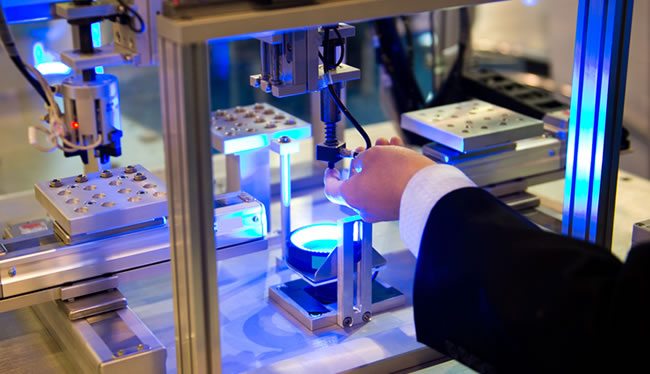
The announcement of a new generation of low-power MEMS acceleration sensors for wearables from Bosch Sensortec in the Summer of 2017 (see image above), with the inclusion of an enhanced step counter for wearables which are integrated in the sensor and need no complementary external microcontroller, is just one of many examples of how transducers and sensors increasingly become smarter, more functions are integrated and the performance of sensors increases with higher accuracy as one of many results.
Other examples of how transducers are becoming part of a smarter environment were mentioned in our interview with Martin Feder of EcoXpert on BMS (building management system) evolutions and drivers in the age of IoT, emphasizing that moving of intelligence towards the edge.
As Martin says, field controllers or the actual control devices in the rooms and spaces of a building move to the IP level. This was already the case for other parts of the overall building equation of course but with the field level moving to IP, intelligence can shift and IoT moves in. Think about controls, which you don’t see, in areas such as office spaces, hospital rooms and so forth. What you might see is the temperature sensor, the light switch and the controls showing you numbers to move up or down but the rest is hidden behind walls or in ceilings, Martin states.

Moreover, on top of the already existing transducers in HVAC systems, Martin says that the first small actuators which sit on a radiator or control the airflow in a room are increasingly popping up and get slowly connected in the scope of IoT with benefits such as less wiring and faster connectivity with information and decision making at the edge and a more autonomous decision making happening at the field level.
By way of an example Martin among others mentions how an actuator can decide on the opening or closing of a flow of energy such as a flow of water whereby IoT can steer decisions based upon activity variables and similar parameters, enabling the system to reduce energy consumption by having actuators close specific parts off and send a message to the front end about this decision and about how much energy is saved this way.
You can imagine that, given the myriad types of sensors which are used in IoT and the myriad IoT use cases there are really a lot of MEMS chips, actuators and sensors in our lives. As said: transducers are ubiquitous.
MEMS and sensors in the ever more wireless IoT world
The IoT is increasingly becoming a matter of wireless IoT protocols. In Industrial IoT, the majority of IIoT connectivity still is about fixed lines but here as well wireless IoT is the fastest grower and with 5G the industry might just have what it needs in a few years (and there are others who want to play in the still very diverse landscape).
Connectivity will of course always remain a matter of mixes as there are several types within the scope of one major project. Yet, when looking at consumer applications and also when looking at connecting sensors in a majority of IoT use cases where low-power and wide-area non-cellular LPWAN protocols solutions suffice (with the two major players being Sigfox and LoRa) we see that there is an increasing number of sensor chip and transceiver players coming up with solutions for one or both of the mentioned non-cellular LPWAN players.
This of course comes on top of already supported wireless connectivity standards, and let’s not forget new ones. We don’t mean 5G here which is still further away but, for instance NB-IoT and also Bluetooth Mesh Networking in ample environments and probably about to play a bigger role in the rapidly growing wireless sensor network (WSN) market, including industrial WSNs. As the people of Bluetooth SIG put it, “Bluetooth mesh networking is designed to meet the strict reliability, scalability and security requirements of IWSNs”. After having introduced Bluetooth Low Energy, the support of mesh for many-to-many communications was launched in the Summer of 2017. We’ll see what the future will bring but wireless it will be.
MEMS and transducers: in which IoT applications, devices and use cases are they used?
So, there is also a lot more to explain about them. However, now you have the essence. There are actuators and sensors, in MEMS and outside MEMS, for all IoT devices and use cases.
Predictive maintenance and asset management are based upon several changes in signals such as vibration, sound or temperature, to name a few. Your present and future gaming devices are full of transducers.
Industry 4.0 applications, augmented and virtual reality, building management controls, smarter cars, smarter phones, smart lighting, smart home applications, smart glasses, HVAC systems, home entertainment systems, smart city applications, smart factories, smart waste management, smart pollution monitoring and anything else you can imagine: driven by the data/actions of transducers or sensors and actuators and in most of the ‘smart’ cases in the microscopic format of MEMS.
As an example of the fact that ever smaller MEMS contain sensors and actuators does not mean that all transducers are in such microscopic format, is your traditional light bulb whereby an electrical current is transduced into light and heat. And to be a bit more modern, one of the most used little light-related things we all know, use and increasingly will use: LEDs. A LED is nothing else than a simple output transducer.
That’s indeed how far it stretches. However, you haven’t seen nothing yet. Once we start adding more complex sensors, actuators, transducers, IoT use cases and evolutions and look at the main types of sensors and actuators that are used in IoT today and at how sensing is really just one small part of the overall equation, things will become even clearer.
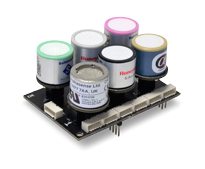
Just by way of an example and by way of a taste of what’s yet to come: the Gases Pro sensor board of IoT specialist Libelium (see image) is used for city pollution and air quality IoT applications, greenhouse management, the gauging of indoor air quality, forest fire detection and fighting and the control of chemical and industrial processes to name a few. It contains sensors for ‘sensing, among others, pressure, humidity, temperature, dust particle presences, Carbon Monoxide (CO), Carbon Dioxide (CO2), Molecular Oxygen (O2), Ozone(O3), Nitric Oxide (NO), Nitric Dioxide (NO2), Sulfur Dioxide (SO2), Ammonia (NH3), Methane (CH4) and other combustible gases, Molecular Hydrogen (H2), Hydrogen Sulfide (H2S) and much more.
One sensor board for a really limited number of IoT use cases with a chemical aspect in the big galaxy of IoT use cases.
Top image: Shutterstock – Copyright: chombosan – Loudspeakers image: Shutterstock – Copyright: Digital Storm – Optical transducer image: Shutterstock – Copyright: hxdbzxy – All other images are the property of their respective mentioned owners.
